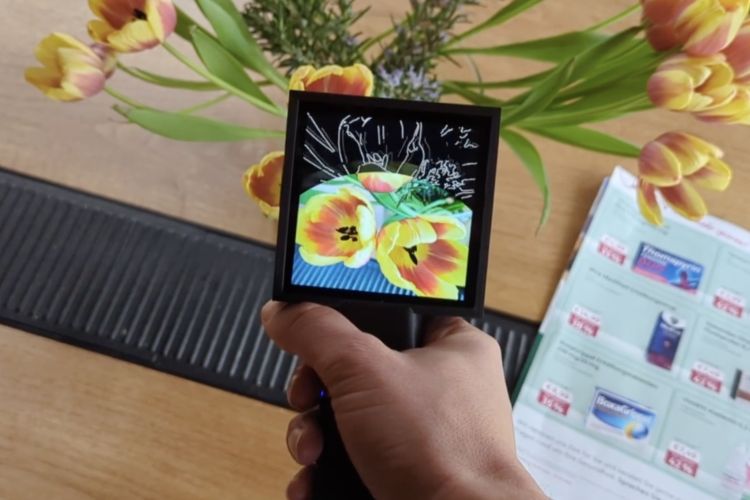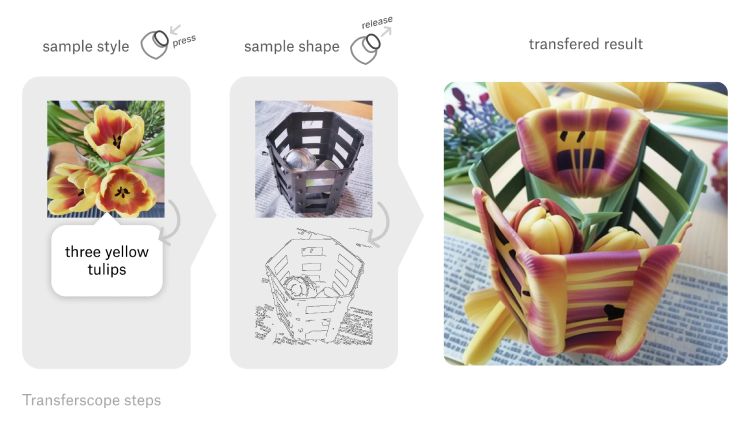
Transferscope is a Raspberry Pi-powered handheld device that creates new renderings from real-world images with the aid of AI. An AI researcher named Christopher Pietsch is the one who created this experimental device. The Transferscope allows users to capture an object or concept and blend it into any scene, creating imaginative realities. With the onboard screen for visual feedback and single button interface for control, it is very easy to use the Transferscope.

Under the hood, the Tranferscope is powered by a Raspberry Pi Zero 2 single board computer. It also features a 720x720 pixel display for visual feedback and an IMX519 camera for image capture. The whole system is powered by two 18650 lithium-ion batteries enclosed within the 3D-printed case. The device runs on Debian and uses custom Python scripts for image capturing and processing with PyGame, OpenCV, Asyncio and libcamera.

After the edge detection that runs directly on the device, the results are then sent to a server for image interpretation and output generation. The server uses Microsoft’s Kosmos 2 for image interpretation and Stable diffusion for image generation. The image is first interpreted, then sent to an IPAdapter which synthesizes contextual and visual information into an entirely new image. The module used to steer the image generation towards the input geometry is a ControlNet. This setup allows Transferscope to transform captured images into new textures and patterns and apply them to a second scene almost instantly (<1s), creating a seamless experience for the user. If you like to know more about the project, you may check out the Transferscope project page for more details.

